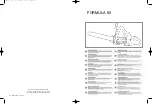Reviews:
No comments
Related manuals for Chainsaw

FORMULA 60
Brand: Gardena Pages: 15

PE-AKS 18 Li Basic
Brand: Pattfield Pages: 200

GKC1820L-XE
Brand: Black & Decker Pages: 16

LCS1020
Brand: Black & Decker Pages: 60

LCS120
Brand: Black & Decker Pages: 64

Powerufl Solutions GKC1817L
Brand: Black & Decker Pages: 128

GKC1817
Brand: Black & Decker Pages: 136

GKC1825L
Brand: Black & Decker Pages: 16

DS11
Brand: Stanley Pages: 28

2810
Brand: Chicago Electric Pages: 12

Aerocore
Brand: Masport Pages: 8

553159
Brand: Masport Pages: 12

59595016
Brand: Haussmann Pages: 26

08395004
Brand: Haussmann Pages: 24

EFCO M 2200
Brand: EMAK Pages: 202

EPR 35-24
Brand: Narex Pages: 44

46 cc Petrol Chainsaw
Brand: Qualcast Pages: 58

Powerplus POWXG1023
Brand: VARO Pages: 25

















